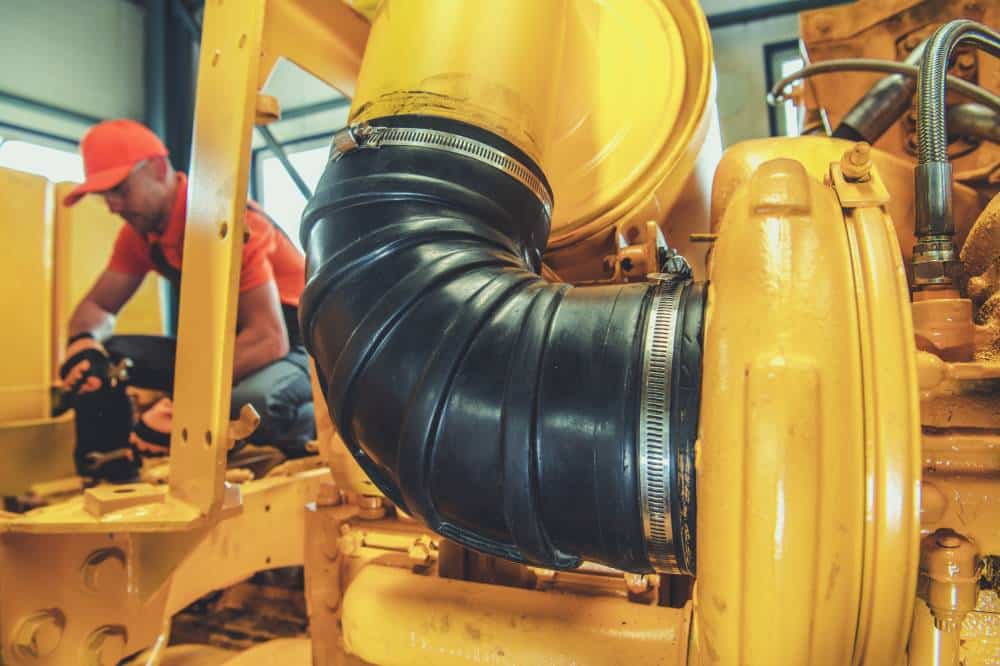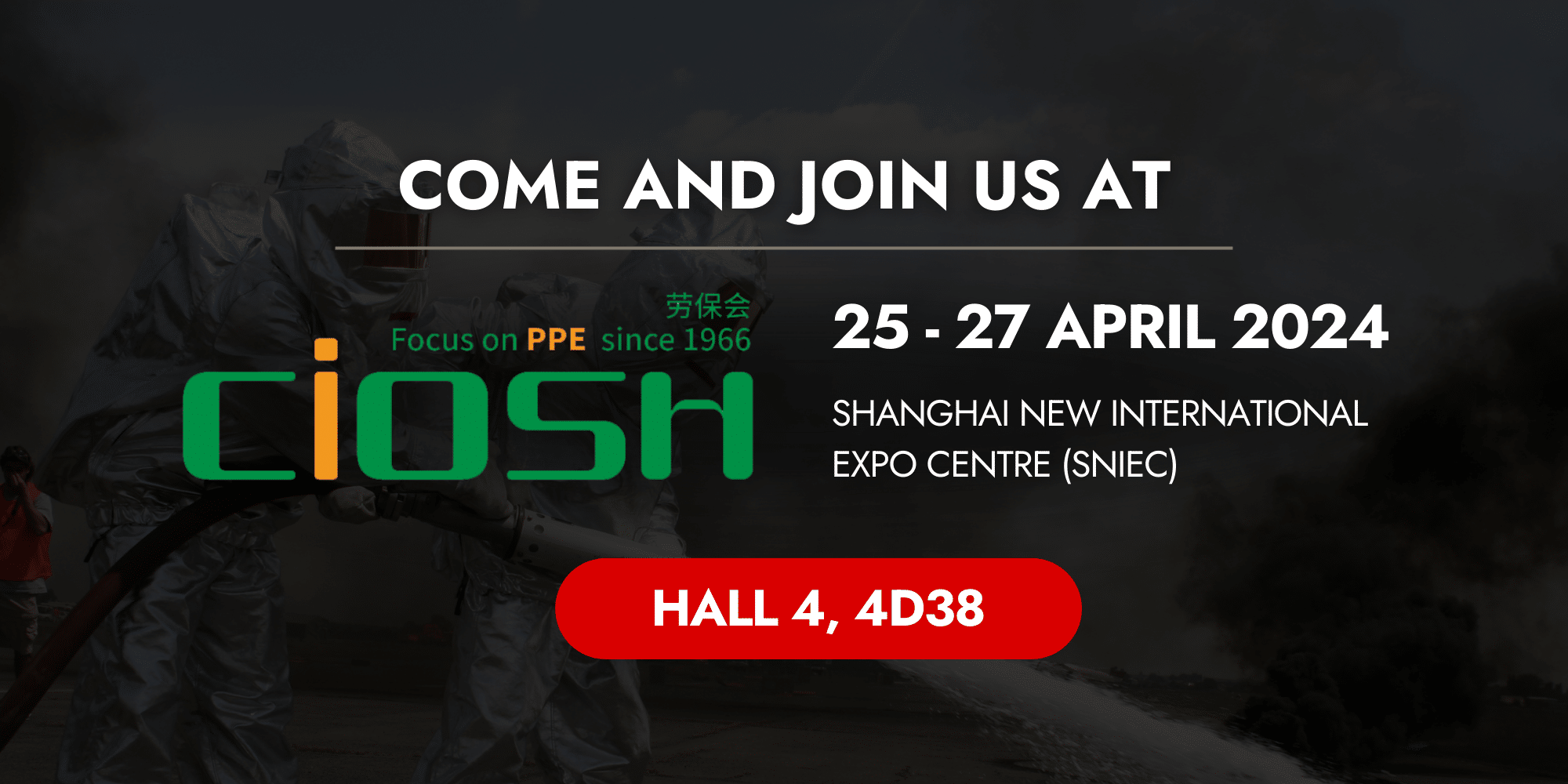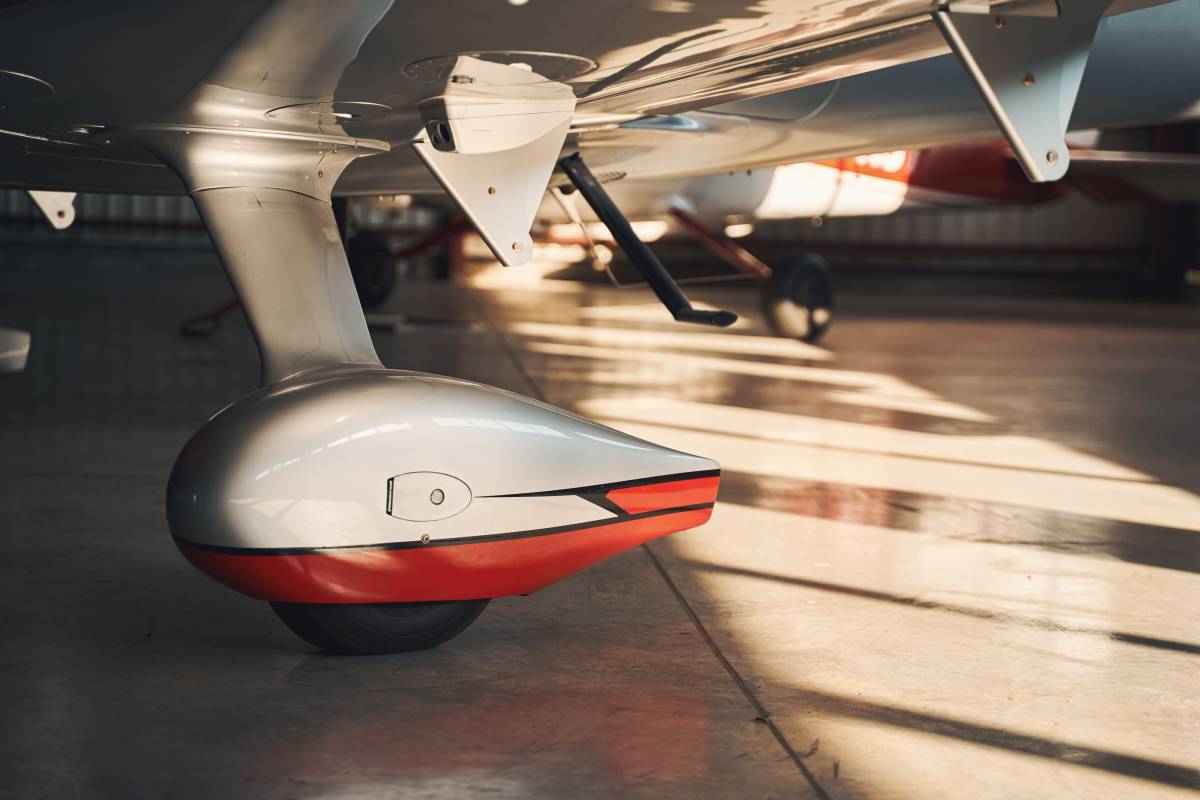In HVAC (Heating, Ventilation, and Air Conditioning) systems, adaptability and efficiency stand as paramount considerations.…
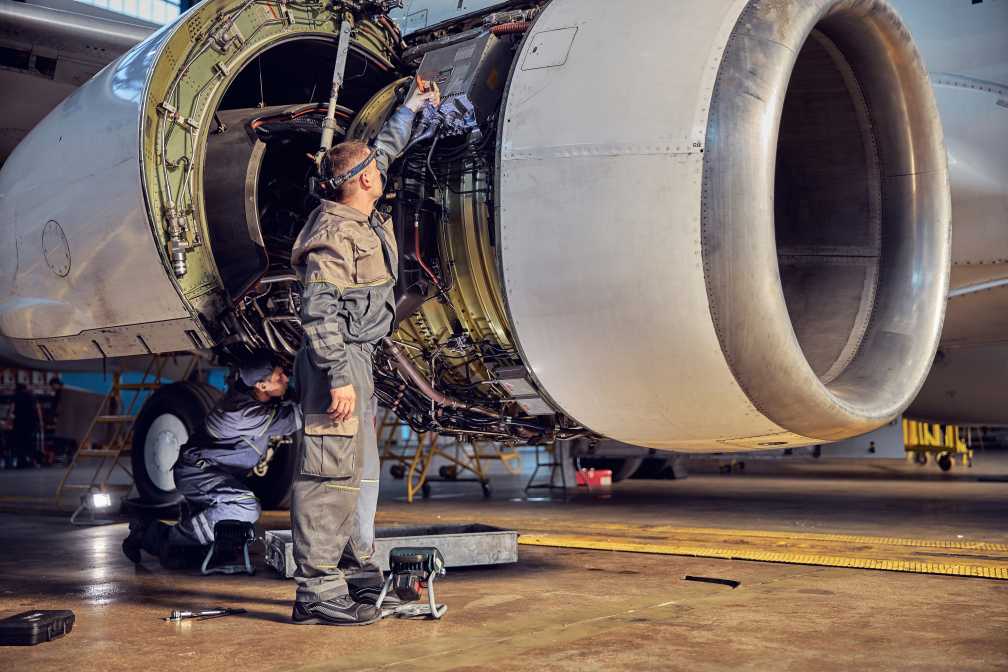
Aircraft Engine Cover – Incompatibility of PVC With Titanium
When it comes to the aviation industry, every component must be designed and chosen with precision. One crucial factor that often goes unnoticed is the compatibility between materials used in airplanes and engine covers and their parts. Although they may be painted with the same bright red material, they have their compatibility issues.
In this in-depth analysis, we decode the advantages and disadvantages of titanium and PVC, shedding light on their compatibility issues and potential consequences. We explore crucial aspects such as structural integrity, heat resistance, and durability, to help aviation professionals make informed decisions when it comes to choosing aircraft engine cover materials.
Let’s unravel the mystery behind the titanium vs. PVC compatibility issue and discover the best practices for ensuring the safety and efficiency of aircraft components during storage.
Understanding Titanium: Properties And Characteristics
Titanium is a highly versatile metal known for its exceptional strength-to-weight ratio, corrosion resistance, and excellent high-temperature performance. These properties make it an ideal choice in the aeronautics industry for making critical components such as the wing covers and more. Aircraft engine covers and their housings, such as exhaust covers, made from titanium offer superior strength while keeping the overall weight of the aircraft low.
The strength of titanium allows for thinner and lighter components without compromising structural integrity. This translates to improved fuel efficiency, reduced emissions, and increased payload capacity. Additionally, titanium’s corrosion resistance ensures longevity, as it can withstand cold weather, high winds, or even surface contamination from oil leaks.
However, titanium does have its drawbacks. Firstly, it is an expensive material, which can significantly drive up the cost of manufacturing aircraft components. Moreover, titanium’s machining and fabrication processes are complex and require specialized equipment and expertise. This can result in longer lead times and higher production costs.
Understanding PVC: Properties And Characteristics
PVC, short for polyvinyl chloride, is a synthetic plastic polymer widely used in various industries, including construction, healthcare, and transportation. Its popularity in the aviation industry stems from its lightweight nature, cost-effectiveness, and ease of fabrication. These characteristics have led to its emergence as aircraft covers.
One of PVC’s key advantages is its low density, which allows for significant weight reduction compared to metal alternatives. This weight reduction can contribute to fuel efficiency and overall cost savings. Additionally, PVC is highly resistant to corrosion, which is crucial for partial covers to protect the engine components from elements such as moisture and chemicals.
PVC also comes with its limitations. Firstly, it has lower mechanical strength compared to metals like titanium. This can restrict its use in certain high-stress applications, where the material needs to withstand extreme forces. PVC is also less heat-resistant than metals, making it unsuitable for engine parts that are exposed to high temperatures. Furthermore, PVC’s durability may be compromised in extreme weather conditions, leading to potential deterioration and reduced lifespan.
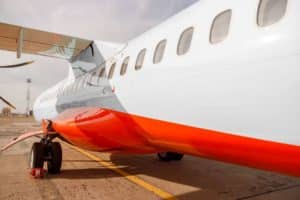
PVC Engine Covers: A Common but Incompatible Choice
Polyvinyl Chloride has been a popular choice for manufacturing engine covers due to its affordability, flexibility, and water-resistant properties. However, the compatibility issues arise when PVC covers come into contact with titanium components. While PVC may offer protection against certain environmental elements, its interaction with titanium can lead to adverse effects.
Chemical Reaction and Corrosion:
One of the primary concerns with using PVC engine covers on titanium components is the potential for a chemical reaction. PVC contains plasticizers and stabilizers, which, when exposed to elevated temperatures, can release chlorine gas. Titanium is highly reactive with chlorine, and the resulting chemical reaction can lead to corrosion and degradation of the titanium surface.
Thermal Considerations:
Aircraft engines operate under extreme temperature conditions, with internal components reaching high temperatures during operation. PVC, being a thermoplastic, has a lower melting point compared to titanium. When subjected to the high temperatures generated within the engine, PVC covers may melt or deform, compromising their protective function and potentially causing damage to the titanium components they are meant to safeguard.
Condensation and Humidity:
During storage, aircraft are often exposed to varying environmental conditions, including fluctuations in temperature and humidity. PVC covers may not create a completely sealed environment, allowing moisture to accumulate within the cover. This trapped moisture, combined with temperature changes, can lead to condensation on the titanium surfaces, promoting corrosion.
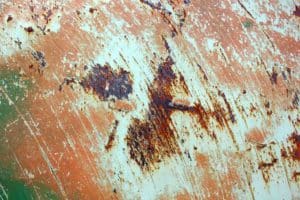
Recommendations for Storage
- Breathable Cover Materials: Consider using cover materials that are both water-resistant and breathable. This allows for air circulation while still offering protection against moisture. Breathable materials help prevent the buildup of condensation within the cover, reducing the risk of corrosion on titanium parts.
- PVC Alternatives: Since PVC is unsuitable for titanium parts, choose fabric composed of polyester, aramid knit with reverse side base, or Polyurethane (PU) coating. PU-coated protective aircraft covers are resistant to aggressive oils and fluids commonly encountered in the aeronautics sector. Furthermore, the soft contact aspect of PU coating is essential for protecting delicate surfaces like canopies and inlets.
Importance Of Proper Material Selection And Testing
When choosing materials for airplane covers and engine parts, consider factors such as structural integrity, heat resistance, corrosion resistance, and durability. A thorough understanding of the materials’ properties and their interaction is necessary to ensure the safety and performance of aircraft components.
Selecting the appropriate aircraft engine cover is crucial for ensuring the protection and performance of the engine components. Several criteria should be considered when choosing an engine cover:
- Material Compatibility: The chosen material should be compatible with the materials used in the aircraft engine components. As discussed earlier, compatibility issues can arise when materials like PVC interact with titanium, leading to corrosion or other forms of damage.
Material selection should be based on comprehensive testing and evaluation, considering both individual material properties and their compatibility with other materials. This testing should involve simulated environmental conditions, such as temperature variations, and exposure to moisture, and should even test the interior reflectors. Only through rigorous testing can aviation professionals gain confidence in the compatibility and long-term performance of materials used in aerospace applications.
- Heat Resistance: Aircraft engines generate significant heat during operation. The engine cover must be capable of withstanding high temperatures without melting or deforming. Heat-resistant materials, such as those designed for aerospace applications, are essential to prevent damage to the cover and the underlying components.
- Abrasion Resistance: The cover should have sufficient resistance to abrasion, especially in areas prone to friction and vibration. Abrasion-resistant materials help maintain the protective integrity of the cover and prevent physical wear on critical engine components.
- Moisture Resistance: Moisture, whether from rain, condensation, or humidity, can lead to corrosion and other forms of damage. A suitable engine cover should provide effective moisture resistance to protect the engine components during storage or adverse weather conditions.
- Breathability: While moisture resistance is essential, the cover should also be breathable to allow for proper ventilation and prevent the buildup of condensation. Breathable covers help maintain a balanced environment and prevent trapped moisture.
- Customization and Fit: Engine covers should be designed to fit the specific model and type of aircraft engine. Customization ensures a snug fit, reducing the risk of wear and tear caused by loose or ill-fitting covers. Customized covers can also account for the unique shape and configuration of various engine components.
- Ease of Installation and Removal: Engine covers should be easy to install and remove. This facilitates regular inspections and maintenance without causing unnecessary delays or difficulties for maintenance personnel.
- Weight: Considering the weight of the cover is important, especially in aviation where weight impacts fuel efficiency. While the cover needs to be durable and protective, it should not add unnecessary weight to the aircraft.
- Environmental Impact: Consider the environmental impact of the cover material. Opting for materials that are environmentally friendly and compliant with industry standards aligns with the aviation industry’s increasing emphasis on sustainability.
- UV Resistance: UV radiation from sunlight can degrade certain materials over time. Engine covers with UV-resistant properties help protect against the harmful effects of prolonged exposure to sunlight during outdoor storage.
- Durability and Longevity: The cover should be durable enough to withstand the rigors of aviation environments. Longevity is crucial to reduce the frequency of replacements, ensuring cost-effectiveness and reliability over the lifespan of the cover.
- Compliance with Regulations: Ensure that the chosen engine cover complies with relevant aviation regulations and standards. Adhering to industry guidelines helps guarantee the cover’s suitability for aviation use and ensures the safety and performance of the aircraft.
By carefully considering these criteria, aircraft operators and maintenance personnel can make informed decisions when selecting engine covers that not only provide effective protection but also contribute to the overall reliability and longevity of aircraft engines.
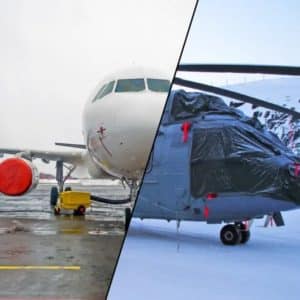 \
\
Final Thoughts On Aircraft Engine Cover – Incompatibility of PVC Vs Titanium
The compatibility issue between titanium and PVC in airplane covers and engine parts is a critical consideration for the aviation industry. While titanium offers exceptional strength and durability, PVC provides lightweight and cost-effective alternatives. However, their compatibility is compromised due to differences in physical properties.
Proper material selection, testing, and adherence to industry standards and regulations are essential for mitigating compatibility issues and ensuring the safety and efficiency of airplane covers and engine parts.
As the aviation industry continues to evolve, the quest for compatible materials will remain a priority. By addressing the compatibility issue between titanium and PVC, the industry can pave the way for innovative solutions that enhance safety, performance, and sustainability in aircraft construction.
Otego offers a range of protective covers for aircraft, including military aircraft covers and helicopter protective covers, that ensure preservation and maintenance of the machine. Quite often, PMMA is used in manufacturing fighter aircraft canopies which are prone to damage due to weather aggression, foreign object debris, and the crazing effect. Otego is a manufacturer of FAR 25-compliant protective covering material that has non-abrasive anti-crazing properties in addition to being heat, cold, and UV resistant, the perfect partner for safe flights and protective weathering.
Another solution that comes with the aircraft cover is a fighter aircraft inlet and exhaust cover that protects the airplane exhaust from corrosion and foreign object damage. You can also explore the various technical textile solutions from Otego from release liners and bellow fabrics to heat-protective, resistant, and insulation fabrics.
Connect with Otego today for further queries.
